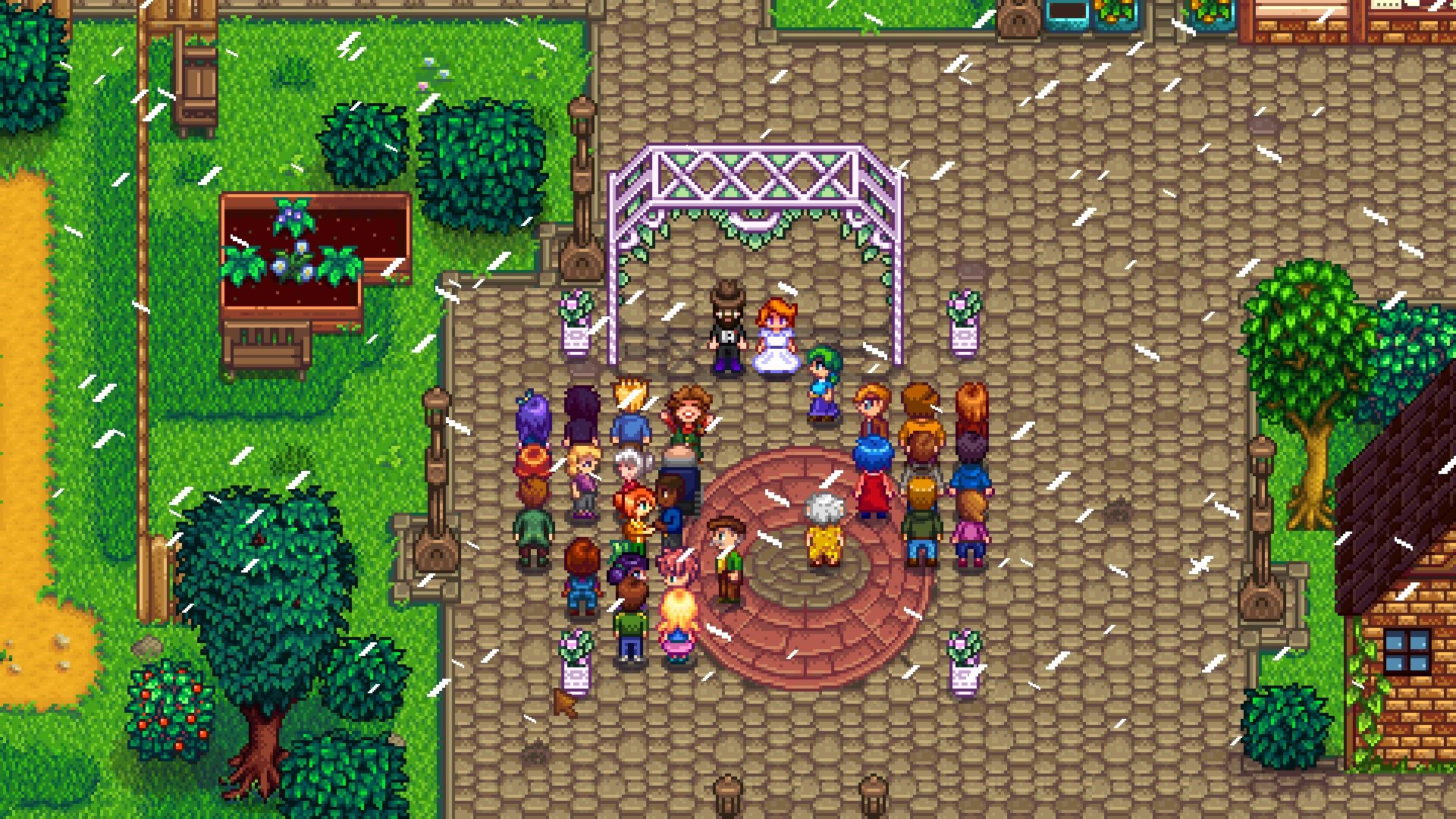
In Stardew Valley, players can devote themselves to pursuing relationships with other characters in the game. The mechanics through which players develop these relationships include gift giving, completing tasks, and initiating conversation. On the surface, certain facets of Stardew Valley’s relationship mechanic, such as the ability to pursue a queer relationship, make it appear as an open space for players to resist heteronormative roles. However, I would argue that the mechanics and design of relationships in Stardew Valley inadvertently ask players to engage with their romantic interest in ways that are coded to the traditionally male gender role that characterizes heteronormative dating.
With this framing in mind, the mechanic of gift giving is revealed to be quite troubling. Giving a character a gift that they like increases the player’s relationship level with the character more than simply talking to that character does. As a baseline, characters never reject gifts, even if they hate them. By privileging gifts, the game foreground material objects, ones which are sometimes difficult to obtain or lucrative, as key to developing a relationship quickly in Stardew Valley. In other words, the player who conforms to the role of being a “good provider” is the one who has the most luck in their relationships. The gifts that are given to the player by characters in the mail are often recipes and food, which creates an uncomfortable parallel between the player assuming the traditional “masculine role” and character assuming that traditional “feminine role” in the objects exchanged between them.
While the player’s ability to successfully end up with any character who is single is a common feature in many dating sims, the one-sidedness of engagement in Stardew Valley creates a concerning dynamic between the player and the NPCs. In the game, the player nearly always assumes the role of being the initiator in the relationship. Even though characters past a certain relationship level can gift you items, this interaction is underpinned by the player’s choice to develop a relationship with those characters in the first place.
Part of what is disturbing about this model of play is how it jeopardizes the idea of consent within the game. The player is encouraged to doggedly engage with characters who seem to display no reciprocated interest (ie. Shane, Sebastian), and is ultimately rewarded for the classic “never give up” mindset. The game seems to promise that if the player just talks to the person more and gives them better gifts, they will always “give in” and warm up to the player.
By presenting the characters’ who feel off-put by the player’s advances as simply “challenging,” the game undercuts the importance of refusal in the beginning stage of a relationship. In short, the characters in the game literally cannot deny or reject the player in any meaningful way, because these moments of resistance are reduced to being their character archetype. This creates a play experience that uncannily resonates with the image of the man who cannot be refused, who doesn’t take no for an answer, who is always in control of determining what stage the relationship is at. For example, the player chooses whether the friendship level with a character progresses past 8 hearts through their decision to give the character a bouquet.
While one could argue that the player’s ability to present as a woman in the game allows for a reversal of gender roles, where the woman in the one initiating the relationship or being the person to propose, I believe this reversal fails to be productive because it does not critically confront how an imbalance between the individuals’ autonomy in a relationship inevitably acts as a mode of oppression.
